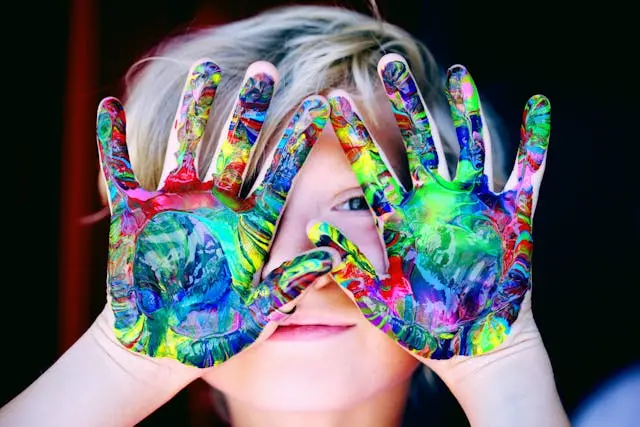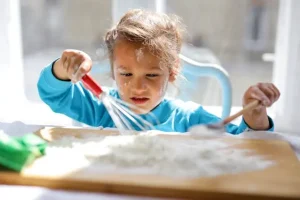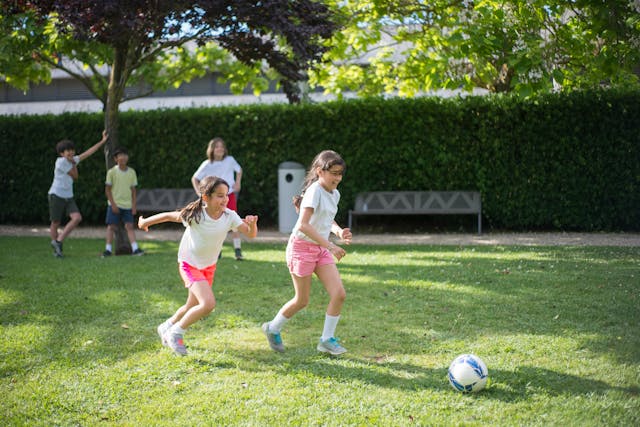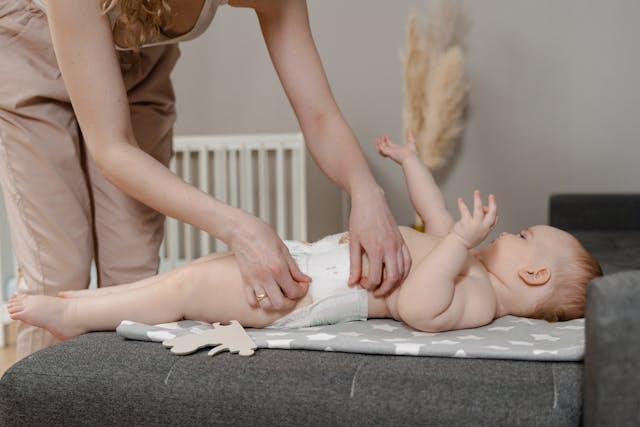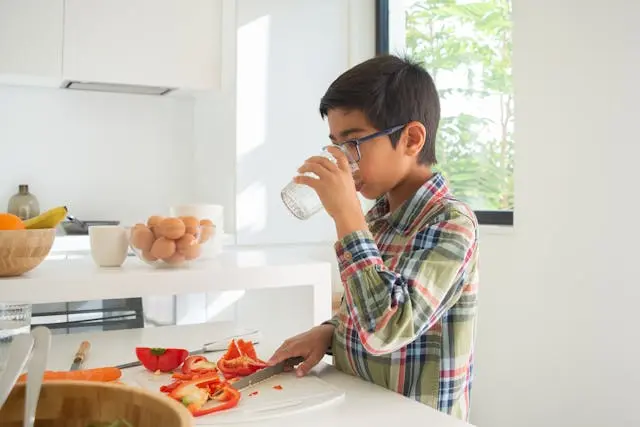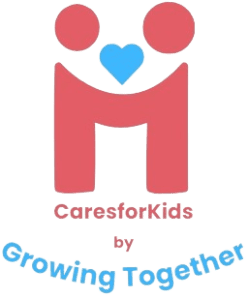The Importance of Messy Play- Benefits and Ideas
As a preschool teacher and a mother, I’ve learned to embrace the messiness of life – literally. If I had a pound for every time I’ve had to clean paint off the walls or dig play dough out of the carpet, I’d be writing this from a private island in the Caribbean. But beyond the chaos, there’s a method to the madness of messy play. This unstructured, creative play method is a goldmine for child development, offering benefits that go far beyond what meets the eye. So, grab your aprons and let’s dive into the wonderful, colourful world of messy play with your child.
What is Messy Play?
Messy play refers to activities that involve various materials such as mud, water, sand, paint, and other tactile substances that children can manipulate and explore freely. This type of play is sensory-rich, providing children with opportunities to touch, feel, and experience different textures and consistencies.
Examples of messy play activities include:
- Sensory bins: These are containers filled with materials like rice, beans, or water beads. Children can scoop, pour, and sift through these materials, enhancing their sensory experiences.
- Painting with hands: Finger painting or using other parts of the body to paint encourages creativity and sensory exploration. (And trust me, nothing says “I love you, Mum” like a handprint turkey on the fridge.)
- Mud kitchens: These are outdoor play kitchens where children can mix mud, water, and other natural materials to ‘cook’ and create.
As a teacher, I’ve observed how children become deeply engaged during sensory play. They are not just playing; they are experimenting, hypothesising, and learning through trial and error. This type of hands-on learning is invaluable and fosters a sense of curiosity and wonder. Plus, it’s a great excuse for them to get dirty without getting into trouble!
The Benefits of Messy Play
Messy play is more than just fun; it plays a crucial role in a child’s cognitive, physical, and emotional development.
Cognitive Development
Messy play enhances problem-solving skills and encourages creativity and imagination. For instance, when children mix colours or textures, they are learning about cause and effect. They are also developing their ability to think critically and solve problems as they experiment with different materials. One of my students, for example, discovered that mixing blue and yellow paint created green, a discovery that led to hours of exploring other colour combinations.
Physical Development
Engaging in messy play helps improve fine and gross motor skills. Activities like squeezing, squishing, pouring, and scooping require precision and control, which strengthen hand muscles and improve coordination. Playing in a mud kitchen or creating shapes with play dough also enhances balance and physical coordination. I remember a day in the classroom when we set up a mud kitchen, and the children spent hours pretending to be chefs, carefully pouring and mixing their muddy concoctions. Their focus and dexterity improved remarkably through this play.
Emotional and Social Development
Sensory activities foster independence and confidence. It allows children to make their own choices and decisions, boosting their self-esteem. It also enhances social interaction and cooperation, as children often engage in messy play together, sharing materials and ideas.
From a mother’s perspective, I’ve seen how sensorial play has helped my child become more confident and independent. Watching my child navigate different textures and materials, and seeing the joy and pride on their face as they create something unique, has been incredibly rewarding. Plus, I get a front-row seat to their first science experiments, like “What happens when you mix all the paints together?” Spoiler: it’s always brown. :p
Messy Play Ideas for Home and School
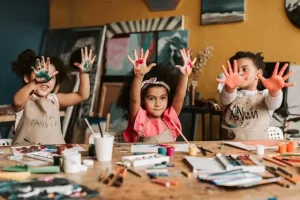
Introducing messy play can be easy and fun. Here are some ideas for both indoor and outdoor settings:
Indoor Messy Play Ideas
- Play dough and clay modelling: These are excellent for developing fine motor skills and encouraging creativity.
- Water play with cups and containers: This can be done in the bath or with a small water table. Children love pouring and transferring water, which is great for hand-eye coordination.
- Finger painting and sponge painting: These activities allow children to explore colours and textures freely.
- Shaving cream art: Spread shaving cream on a tray and let children draw and create patterns. Add food colouring for a colourful twist.
- Messy cooking: Let children help with simple cooking tasks like mixing batter or kneading dough, which combines sensory play with practical life skills.
- Holiday-themed sensory bins: Create sensory bins themed around holidays like Halloween (with orange rice, plastic spiders, and mini pumpkins) or Christmas (with red and green rice, jingle bells, and pinecones).
Outdoor Messy Play Ideas
- Gardening and digging: Allowing children to dig in the soil, plant seeds, and water plants connects them with nature and enhances their sensory experiences.
- Mud pie making: This classic activity is fantastic for imaginative play and sensory exploration.
- Sand and water play: Whether at the beach or in a sandbox, playing with sand and water is a timeless messy play activity that children adore.
- Nature collage: Collect leaves, flowers, and other natural materials to create a collage on a large piece of paper or cardboard.
Messy Play Ideas Video
Tips for Managing Mess and Cleanup
While messy play can seem daunting due to the potential for mess, there are ways to manage it effectively:
- Set up a designated play area: Use a mat or tarp to contain the mess and make cleanup easier.
- Dress children in old clothes or aprons: This will prevent good clothes from getting stained.
- Have cleaning supplies handy: Keep wipes, towels, and a bucket of water nearby for quick cleanups.
- Involve children in cleanup: Teach children to clean up after themselves, making it part of the play activity.
Both as a teacher and a mother, I’ve found that the benefits of messy play far outweigh the inconvenience of a bit of extra cleaning. By being prepared and setting clear boundaries, you can minimise the mess and maximise the fun. And if all else fails, just remember – everything is washable. Mostly.
Overcoming Common Concerns about Messy Play
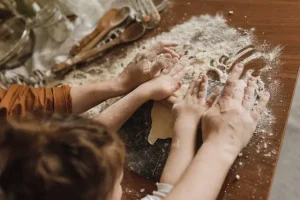
Some parents and educators may have concerns about messy play. Here are some common worries and how to address them:
Cleanliness and Hygiene
Concerns about cleanliness are understandable, but with proper precautions, messy play can be hygienic. Encourage hand washing before and after play, and clean materials and surfaces regularly.
Managing Allergies and Sensitivities
For children with allergies, choose hypoallergenic materials and avoid known allergens. Always supervise children closely to ensure they do not ingest non-edible materials.
Dealing with Limited Space
If space is an issue, consider using smaller containers or trays for messy activities. Sensorial play doesn’t require a lot of space; it’s more about the sensory experience.
As a mother, I’ve found that addressing these concerns proactively has made messy play a more comfortable and enjoyable experience for both my child and me. By taking simple steps to manage potential issues, you can ensure that messy play remains a positive and beneficial activity.
Conclusion
Messy play is a powerful tool in fostering a child’s development. It enhances cognitive, physical, and emotional growth while providing endless opportunities for fun and creativity. As a preschool teacher and a mother, I’ve seen the transformative effects of messy play and strongly encourage parents and educators to incorporate it into their routines. Plus, it’s a great way to justify the seemingly endless piles of laundry – you’re not just washing clothes, you’re supporting cognitive development!
Have you tried messy play with your children or students? Share your experiences and messy play ideas in the comments below!
By embracing the mess, we open the door to a world of exploration, discovery, and learning for our children. Let’s celebrate the joys and benefits of messy play together! And remember, when life gets messy, just grab a towel and enjoy the ride.
Written by: Maryam
Preschool teacher and expert in early childhood
BA Early Childhood Education with Psychology

